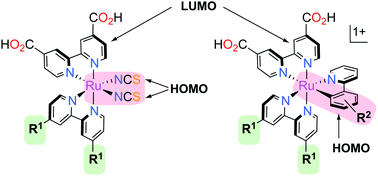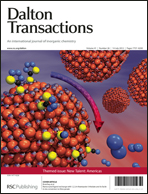Cycloruthenated sensitizers: improving the dye-sensitized solar cell with classical inorganic chemistry principles
Abstract
A divergence from the conventional approach to chromophore design has led to the establishment of many exciting new benchmarks for the dye-sensitized solar cell (DSSC), including the first documented power conversion efficiency in excess of 12% at 1 sun illumination [Yella et al., Science 2011, 334, 629]. Paramount to these advances is the deviation from polypyridyl ruthenium dyes bearing NCS− ligands, such as [Ru(dcbpy)2(NCS)2] (N3; dcbpy = 4,4′-dicarboxy-2,2′-bipyridine). While metal-free and porphyrin dyes have demonstrated much promise, the discovery that the NCS− ligands of N3 can be replaced by anionic, chelating cyclometalating ligands without compromising device efficiencies has ushered in a new era of ruthenium dye development. A particularly appealing feature of this class of dyestuff is that they offer acute control of the frontier molecular orbitals to enable the precise attenuation of both the ground and excited state redox potentials through judicious chemical modification of the aryl ring. This Perspective summarizes very recent developments in the field, and demonstrates how the new and rapidly expanding class of Ru-based sensitizers provides a conduit for enhancing the performance (and potentially the stability) of the DSSC.

- This article is part of the themed collection: New Talent: Americas

 Please wait while we load your content...
Please wait while we load your content...